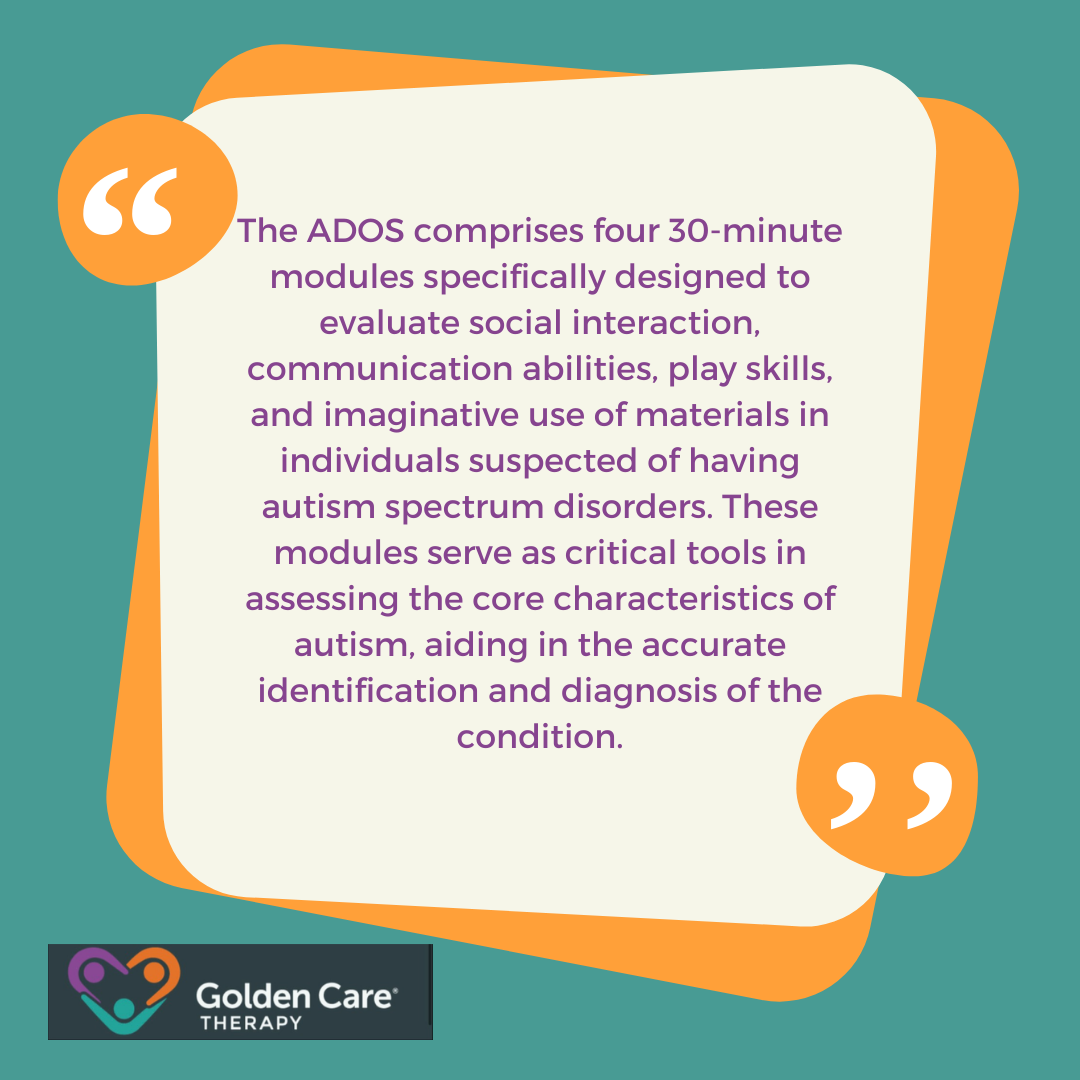The ADOS test is a valuable tool used to help diagnose autism. It focuses on observing behavior and communication in a structured setting, providing insights into how someone interacts, plays, and responds to different situations.
Unlike other tests, the ADOS is designed to capture a wide range of behaviors, making it easier for professionals to understand the unique challenges a person with autism may face.
Through this test, doctors and specialists can gather important information that helps create a clearer picture of an individual’s needs, guiding them toward the right support and interventions.
What is the ADOS Test for Autism?
The Autism Diagnostic Observation Schedule (ADOS)has revolutionized the clinical diagnosis of autism since its development in the 1980s. Initially used for autism research, the ADOS has evolved into the gold standard for diagnosing autism in clinical settings.
However, its extensive administration time and the shortage of trained personnel have led to delays in providing care for many children.

Moreover, the Autism Diagnostic Observation Schedule™ (ADOS™-2) offers a standardized assessment of communication, social interaction, play behaviors, and restricted/repetitive behaviors in children.
This assessment involves direct interactions with the child, observing both verbal and nonverbal communication cues, and noting specific characteristics associated with autism spectrum disorder.
The ADOS and ADOS-2 assessments play a pivotal role in guiding clinicians and healthcare professionals in the diagnosis and management of ASD, providing valuable insights into individuals’ social communication patterns and behavioral traits associated with autism.
The Evolution of Autism Diagnostic Observation Schedule
The Autism Diagnostic Observation Schedule (ADOS) has undergone significant evolution in its development and application for diagnosing autism. Initially designed by Lord C. and her colleagues, the ADOS was created to assess social interaction, communication, play, and imaginative use of materials in children aged five and older suspected of having autism spectrum disorders.
Over time, the ADOS underwent refinements and improvements, leading to the creation of the Autism Diagnostic Observation Schedule Second Edition (ADOS-2). This updated version expanded the age range for assessment, allowing the ADOS-2 to be administered to children from as young as 20 months through adults.
With enhancements in its methodology and structure, the ADOS-2 provides more comprehensive and accurate evaluations for individuals across a wider age range.
The ADOS is structured into four 30-minute modules, each tailored to evaluate specific aspects of an individual’s behavior and communication skills related to autism spectrum disorders. These modules are designed to capture a range of behaviors and interactions that are characteristic of autism.
On the other hand, the ADOS-2 features five modules, with the addition of a toddler module that targets children between 20-30 months who do not use phrase speech. This additional module allows for early assessment and intervention for toddlers displaying signs of autism spectrum disorders.
The incorporation of diverse modules in the ADOS-2 enhances its diagnostic capabilities and enables clinicians to conduct more precise evaluations based on the individual’s age and developmental stage.
The Autism Diagnostic Observation Schedule (ADOS-2)
Moving from the foundation of the ADOS, we explore the enhanced capabilities of the Autism Diagnostic Observation Schedule Second Edition (ADOS-2) and the specific requirements for those tasked with its administration.
The ADOS-2 is an advancement from the original ADOS, and it extends its assessment scope to individuals from 20 months through adulthood. This update addresses the need for a broader age range for accurate autism diagnostics, ensuring that individuals of various developmental stages can benefit from this assessment tool.
The ADOS-2 features five distinct modules, with the latest addition being a specialized toddler module tailored for children aged 20-30 months who exhibit limited or no phrase speech.
This module caters to the unique communication and social interaction characteristics of toddlers, providing a more targeted evaluation for this specific age group.
Due to the complexity and sensitivity of the ADOS-2 testing process, only individuals with a Bachelor’s or Master’s degree in Psychology or related fields, coupled with specialized training, are eligible to administer this assessment. The stringent requirements for administrators ensure that the ADOS-2 is conducted by qualified professionals with the necessary expertise in autism diagnosis and evaluation.
When undergoing an ADOS-2 assessment, individuals can expect a thorough evaluation encompassing four 30-minute modules. These modules are structured to assess key areas such as social interaction, communication, play, and imaginative use of materials – critical components in identifying and diagnosing autism spectrum disorders.
Other Diagnostic Tools for Autism
In addition to the Autism Diagnostic Observation Schedule (ADOS), there are other diagnostic tools commonly used in the evaluation and diagnosis of autism spectrum disorder. These tools provide valuable insights into various aspects of an individual’s behavior, communication skills, and genetic makeup.
Two significant diagnostic tools worth mentioning are the Autism Diagnostic Interview (ADI) and Genetic Testing.
Autism Diagnostic Interview (ADI)
The Autism Diagnostic Interview™, Revised (ADI™-R) is a structured interview conducted with parents to assess a child’s behavior in reciprocal social interaction, communication and language, and restricted and limited interests and repetitive behaviors.
The ADI™-R involves asking general and specific questions about the child’s behavior in various areas to gain a comprehensive understanding of their developmental history and current functioning.
One of the key advantages of the ADI™-R is its ability to provide detailed information on the individual’s social interactions, communication patterns, and repetitive behaviors.
This information is essential for clinicians to make an accurate diagnosis of autism spectrum disorder. By analyzing the responses and scoring the interview results, healthcare professionals can better understand the child’s behavior and tailor interventions accordingly.

Genetic Testing
Genetic testing plays a vital role in the diagnostic process for autism spectrum disorder. These genetic testingcan provide valuable insights into the genetic factors contributing to autism and aid in making a precise diagnosis.
Common genetic tests include chromosome analysis and microarray analysis. These tests help identify any chromosomal abnormalities or copy number variations that may be linked to autism.
Additionally, further genetic evaluations may be conducted if necessary to determine specific genetic causes of autism spectrum disorder, enabling healthcare providers to offer tailored treatment and support based on the individual’s genetic profile.
Through the use of diagnostic tools like the ADI and genetic testing in conjunction with the ADOS test, healthcare professionals can gather a comprehensive range of information to support the accurate diagnosis and management of autism spectrum disorder.
These tools play a crucial role in identifying the unique strengths and challenges of individuals with autism, facilitating early intervention and personalized care for improved outcomes. At Golden Care Therapy, we specialize in providing exceptional ABA therapy in Florida, tailored to each individual’s needs.
Ready to take the next step? Contact us todayto learn how we can help your loved one thrive with our compassionate and effective ABA therapy services!
Sources:



